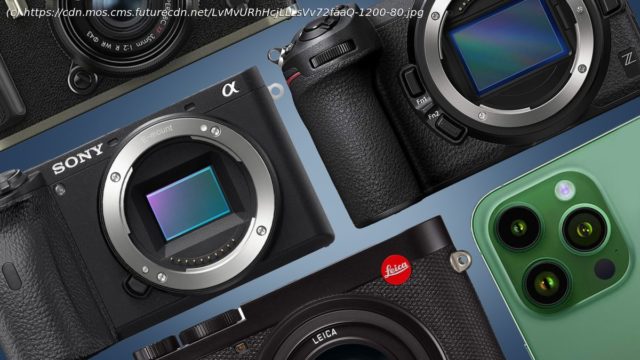In the market for a new camera in 2023? We’ve rounded up all of the latest rumors and picked our most promising launches of the year.
Against all the odds, 2022 was a pretty big year for new cameras – we saw affordable mirrorless cameras make a much-needed comeback, while at the opposite end of the scale the Nikon Z9 scooped our camera of the year award.
With the chip shortages and shipping delays now starting to settle down, it looks like 2023 could be an equally exciting year for new cameras. We’re already seeing strong rumors that Canon, Nikon, Sony and Panasonic will all have new photographic stars to unveil in the early part of the new year.
It isn’t just the traditional giants who are tinkering away in the camera launch bays – DJI and GoPro are likely to deliver new treats for amateur shooters, while the iPhone 15 could be Apple’s most anticipated photographic tool for many years, if the rumors are to be believed.
Of course, none of the cameras in our list below have been fully confirmed by their makers yet. But we are expect to see things start to heat up around February, with possible announcements coming at or around the CP+ conference in Japan.
Looking to turn your telephoto gaze ahead to the rest of the year? Here, in reverse order, are the 12 most exciting cameras of 2023.
The current Panasonic Lumix S5 is a real full-frame bargain. It’s a real do-it-all wonder: great for stills, and great for video. And it also has IBIS (in-body image stabilization), so is a forgiving partner for shooting handheld.
The Japanese rumors site Asobinet (opens in new tab) thinks its successor will be announced at the CP+ show in Japan. That show will be held from 23-26 February, leaving roughly two-and-half years between generations in this particular family.
But how can the Lumix S5 II better the current model? There are relatively few hard rumors and leaks about this camera so far, but the suggestion is it will be at least slightly more expensive. Some of this may be inflationary weight gain, but Panasonic can hide this behind some upgrades.
The Panasonic Lumix S5 II could have a better EVF (electronic viewfinder) than the S5’s 2.36M-dot one. And we’d like to see it lose the mandatory crop when shooting at 4K/60p – the current model can only do so at 4K/30p.
A full-size HDMI port could further increase its credibility as a content creator camera. And a boost to the effectiveness of the IBIS would be welcome, although we’re likely coming up against some physical limits here, as the S5 series is meant to have a moderately-sized body for a full-frame camera.
The A9 range is Sony’s sports shooter series. That means fast shooting, big buffers and moderate resolution. The Sony A9 III was apparently pegged for a release in 2021, but the global chip shortage has seen its announcement pushed back to the first half of 2023 (according to the rumor mill, at least).
It’s likely to take on several of the important stills improvements of the Sony A1, while letting that camera have the edge for video. This means much better handling of strobing lighting, massively reduced rolling shutter effect through faster sensor readout, and smarter AI-powered autofocus.
Rumors suggest the camera’s resolution is going to stay conservative at 24.5MP, and burst shooting will reach 30fps blackout-free. We also expect to see Sony make use of combi SD/CFexpress slots, to allow for much faster clear-out of the buffer.
The EVF’s resolution may increase too, from the 3.58-million dots of the Sony Alpha A9 II to as much as 9.44-million dots. However, we’re not yet sure if it will be the same EVF as the Alpha A1, which has a blistering 240Hz refresh mode.
These days, drones are an important member of any photographer’s camera bag. DJI released the DJI Mavic 3 Classic recently, so do we really need another flying camera? Sure we do. The Air series is typically home to DJI’s mid-sized, mid-range drones, and this one could take over from 2020’s DJI Air 2S.
The Air 3 would likely slot in between the DJI Mini 3 Pro and the Mavic 3 Classic, so what does that mean for its features? We could see a significant improvement to the Air 2S’s 31-minute flight time, which seems quite short compared to the drones DJI has released recently.
Could we see a better camera, too? A 1-inch sensor like the Air 2S’s still seems the right fit for this series, maintaining that middle ground between the more expensive Four Thirds sensor inside the Mavic series and DJI’s approachable Mini drones. However, if DJI uses a new 1-inch sensor, we could still get better low-light performance and potentially HDR shooting.
Sensor-based HDR would require new hardware. Phones like the Sony Xperia Pro-1 and Xiaomi 12S Ultra use the IMX989, which appears to be capable of the chops we’re after. This sensor has been described as ‘for smartphones’, but a version of its underlying tech could theoretically appear in the DJI Air 3.






